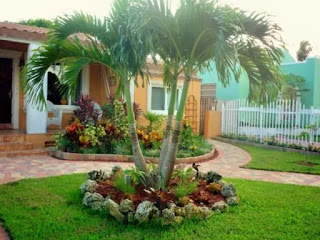living in a very dark house, with no south-facing windows and not much light to work with. This has made it challenging to grow houseplants, but that hasn’t stopped us. We have a huge, thriving indoor garden, and We have become an expert on the best indoor plants for dark rooms.
In this post, we will share with you the plants that have worked best for us in the darkest recesses of our cottage. Just because you don’t have giant sunny windows, doesn’t mean you can’t grow tons of beautiful indoor plants.
Chinese Evergreen
Aglaonema, commonly known as Chinese evergreen, is in my top three favorite houseplants of all time. It’s probably the easiest plant you can grow indoors, and it is a true low light plant. It thrives in a dark corner, as long as it receives a little indirect light for part of the day.
Chinese evergreen requires very basic care, needing only average room temperatures, low light levels, and moderate humidity. It tolerates mild neglect, and easily bounces back from under-watering. It’s perfect for beginners and anyone who needs a plant for a dark room, hallway, or north-facing window.
This plant has many beautiful varieties to choose from. It’s only weakness is cold temperatures. If you plan to place it near an entryway, choose one of the newer varieties like “Emerald Star” or “Silver Bay.” They are less likely to be injured by low temperatures.
Snake Plant
Snake plant, also known as mother-in-law’s tongue, is a well-known houseplant popular for its ease of care and tolerance of neglect. It’s also one of the best indoor plants for dark rooms. My snake plant thrives in a dark corner of my living room where almost nothing else will grow!
Snake plant care is simple. It needs occasional watering, and won’t mind too much if you forget for a few days (or even weeks). It likes dry air, so you don’t have to worry about maintaining humidity, and requires only infrequent feeding. It’s another of the easiest houseplants to grow.
If you have a large darker area you want to fill with plants, snake plant is an ideal choice. You can plant two or more snake plants together – or even combine them with other low light plants to create a beautiful display for dark rooms.
Cast Iron Plant
Cast Iron Plant (Aspidistra eliator) gets its common name from its ability to withstand almost anything – low light conditions, underwatering, and general neglect. It is prized for its attractive foliage. Large, strappy green leaves have a natural waxy coating that makes them appear glossy.
Although it tolerates neglect, cast iron plant does respond well to good care. It thrives in a north-facing window or even under artificial light, which makes it one of the best indoor plants for dark rooms. It can even handle changing temperatures and inconsistent watering.
ZZ Plant
Like snake plant, you may have also seen ZZ plant (Zamioculcas zamiifolia) growing in hotel lobbies and office buildings. This is because it tolerates low light conditions well. Place it in a dark room of your home and it will perform well, as long as it gets a little light each day.
A very attractive and easy-to-grow houseplant, ZZ plant doesn’t have a lot of demanding care requirements. Warm temperatures, dry air, and occasional watering is all it needs to thrive. A great choice for beginners and anyone with a dark room in need of plants.
Peace Lily
One of the only flowering plants that can tolerate low light, peace lily makes a beautiful addition to a dark room or hallway. The plant’s broad, dark-green leaves give it the ability to thrive even in less than ideal conditions.
Peace lilies are very forgiving plants. They will put up with erratic watering schedules and don’t need a great deal of sunlight. You may have issues getting the plant to bloom in a dark room, but you can always enjoy the foliage or supplement with artificial plant lights.
Bird’s Nest Fern
This easy-care fern produces rosettes of lush, green, strappy leaves that are attractive in any space. Because of its large leaves, it’s another of the best indoor plants for dark rooms. Plants with large leaves are typically better able to cope with low light.
Bird’s Nest Fern (Asplenium nidus) needs little care aside from moderate moisture and monthly feedings with diluted fertilizer. Clean the plant’s leaves with a damp, soft cloth occasionally to remove dust and allow light to reach them. This also keeps them shiny and attractive.
Japanese Aralia
If you’re looking for tall plants for dark rooms, look no further than the low light indoor tree – Japanese aralia. Well, it’s technically more like a shrub, but you can grow it as a small tree indoors. It copes well with lower light and produces lovely foliage.
Japanese aralia (Fatsia japonica) can survive temperatures down to freezing in the winter, which makes it a good choice for a dark entryway or hallway near doors. It will be fine with cold drafts, and doesn’t need much light to maintain its lush leaves.

































































